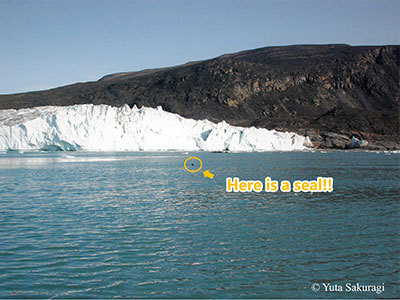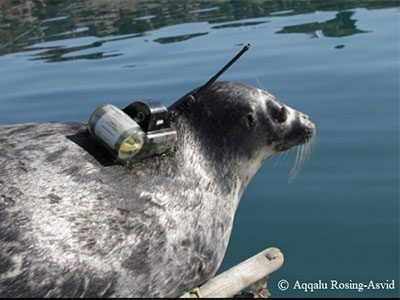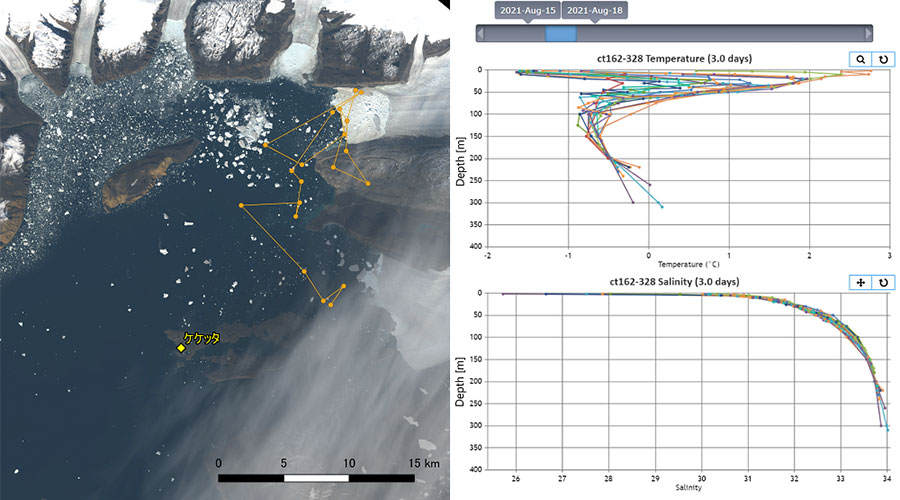We succeeded to attach the CTD tags to seals in Greenland
Reported by Yuta SAKURAGI (Hokkaido University)
In the research program “Changes in the Marine environment and Ecosystem”, a sub-program of ArCS II Coastal Environment research program, we aim to elucidate how the changes in the marine environment and ecosystem would affect on human activities such as fisheries and hunting, mainly through our research in Qaanaaq, a village in northwestern Greenland. We are conducting the research on marine mammals such as seals and narwhals, which are marine predators in the area and are the main hunting targets for local residents.
Mass loss of tidewater glaciers in Greenland has accelerated under the influence of climate change. This leads to the increase of the amount of glacial meltwaters and considered to affect marine ecosystem. Glacial meltwater form plume in front of tidewater glaciers, and plume region becomes hotspot. Therefore, this area would have a particular impact on ecosystems. However, it is difficult and dangerous to monitor the marine environment in front of tidewater glaciers for a long time because of calving (the breaking of ice chunks from the edge of a glacier). To solve this problem, we focused on seals.


The field of our study team is Ingrefield Bredning fjord, northwestern Greenland. This fjord is the habitat of many ringed seals (Pusa hispida). They can swim freely in the water, dive deeply, and often stay in front of tidewater glaciers (Photo 1). By attaching a CTD tag (CTD-SRDL, SMRU) which record marine environmental data (temperature, salinity and depth) and transmit via Argos satellite system, we can monitor the marine environment in front of tidewater glaciers.
This year, due to the corona pandemic, we were unable to go to Greenland to attach CTD tags to seals. Alternatively, we send CTD tags to local researcher, Dr. Aqqalu Rosing-Asvid, and attached to four seals by him (Photo 2). We are still able to track their location and monitor marine environment (Photo 3). We are going to monitor and analyze the data to clarify the dynamics of the fjord marine environment and the ecology of seals.
As for myself, my proposal “Habitat use of three seal species during summer in the waters around Qaanaaq” has been selected as ArCS II Complementary research project for the fiscal year 2021-2022 (two years). In addition, since my doctoral program theme is research in Greenland, I would like to visit there to conduct my research.

